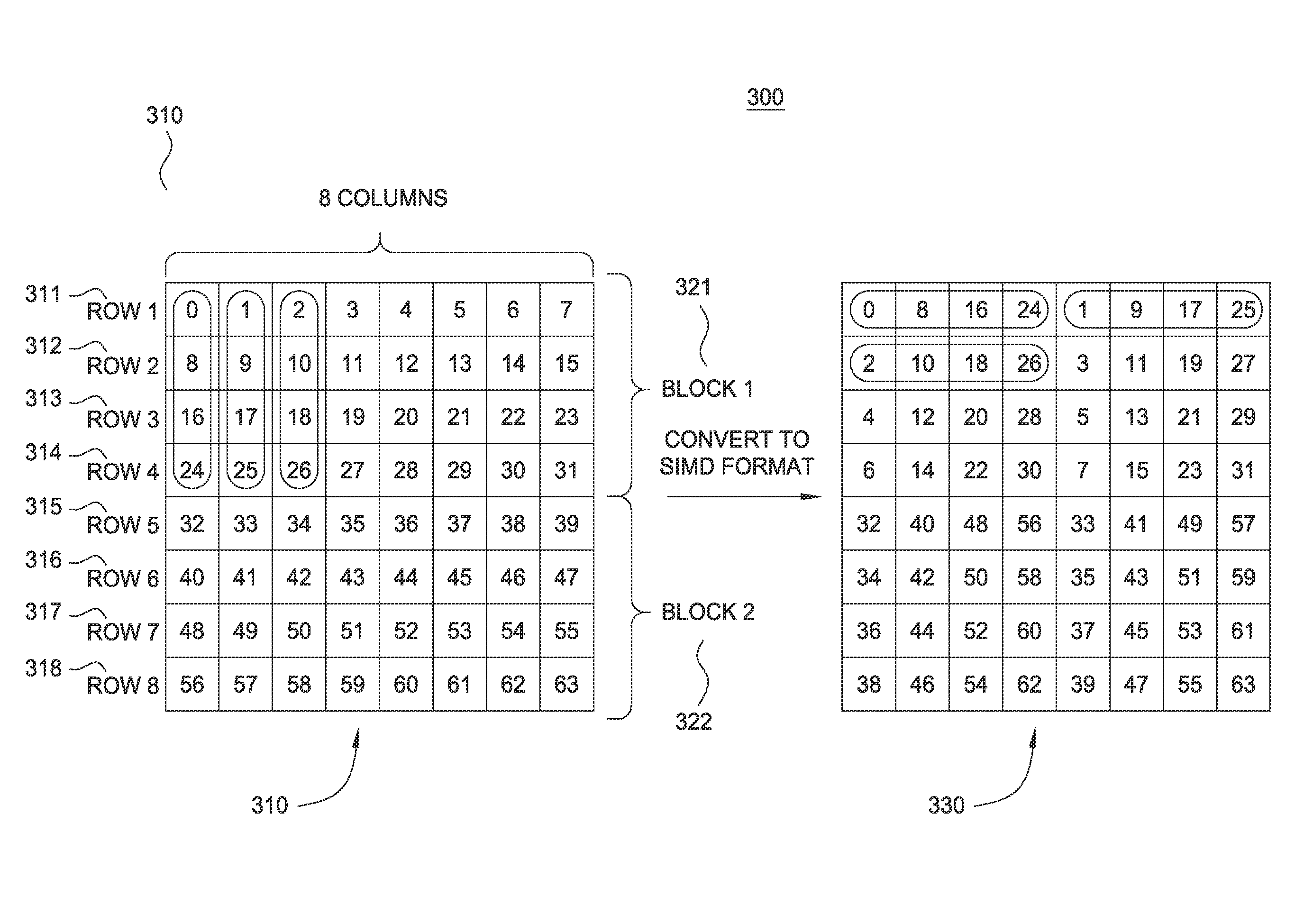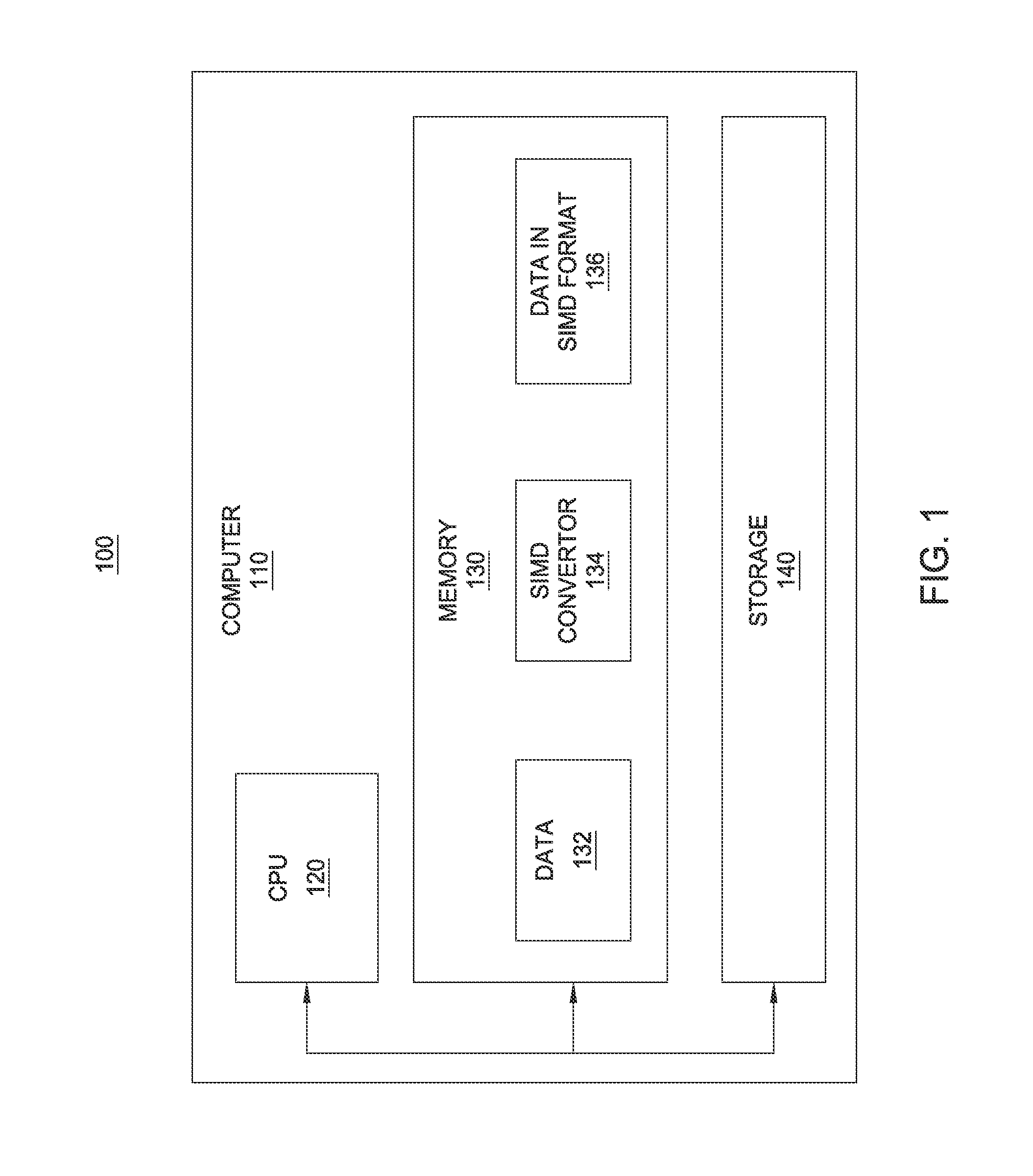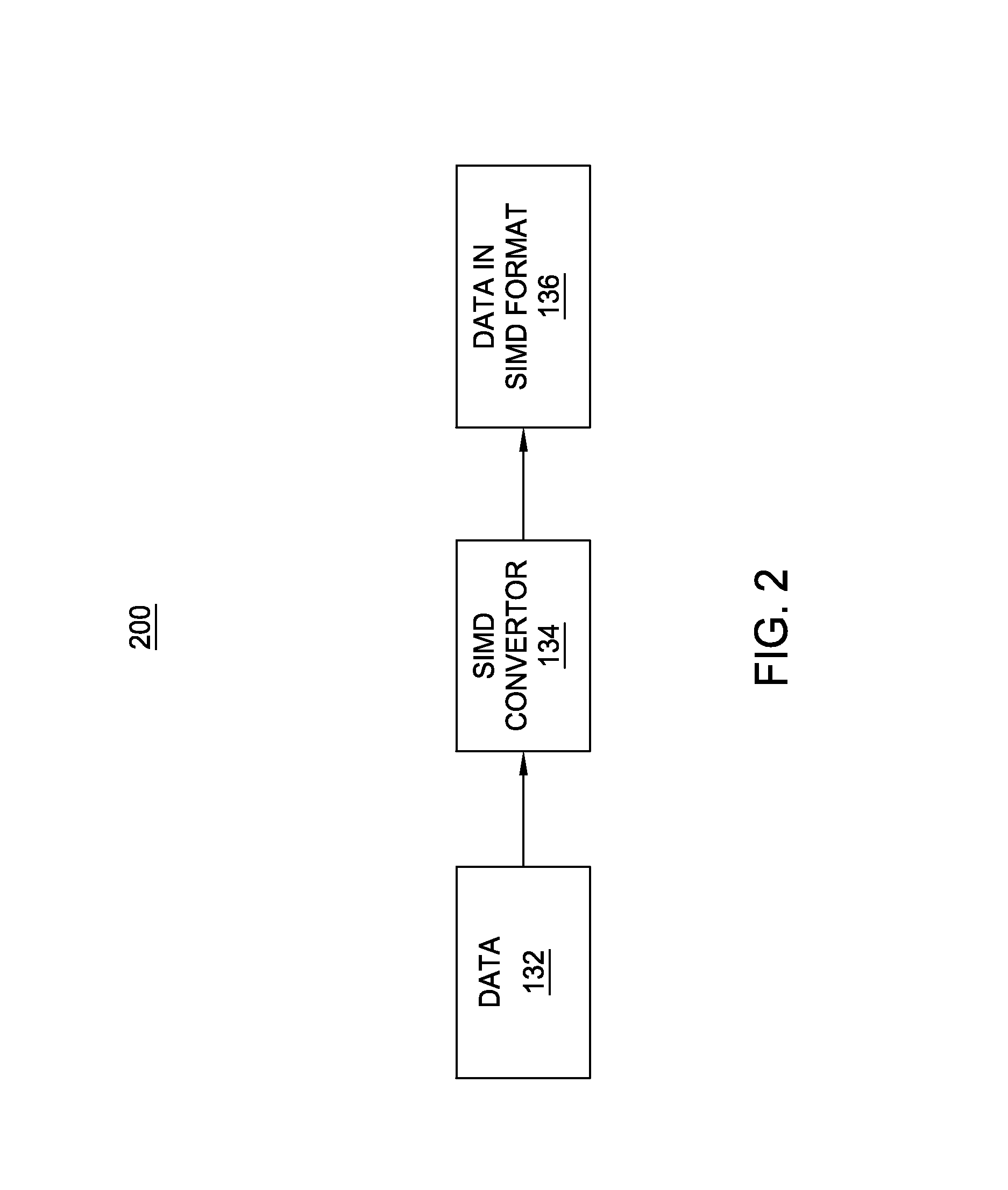Processing array data on SIMD multi-core processor architectures
a multi-core processor and array data technology, applied in the direction of general purpose stored program computers, instruments, program control, etc., can solve the problems of inability to perform ffts efficiently on simd multi-core processors, current libraries for performing ffts are not tailored towards ffts performed on a relatively small array of data, and the lack of functional pipelining of work required
- Summary
- Abstract
- Description
- Claims
- Application Information
AI Technical Summary
Problems solved by technology
Method used
Image
Examples
Embodiment Construction
[0018]Embodiments of the invention provide techniques for converting data into a format tailored for efficient multidimensional FFTs on SIMD multi-core processor architectures. One embodiment provides a technique for converting data from a multidimensional array stored in row-major order into a SIMD format. Converted data in SIMD format may include of a sequence of blocks, where each block interleaves data from a number of rows (s rows) such that SIMD vector processors may operate on s rows simultaneously. That is, each single vector instruction processes s row elements (one from each row) at a time. As a result, smaller-sized 1D FFTs are optimized in multi-core limited-memory processors. Examples of smaller-sized 1D FFTs include 256×256, 512×512 and 1024×1024. That is, n-way SIMD in parallel cores is utilized at a multiple-1D-FFT level.
[0019]To increase single-row parallelism for smaller-sized 1D FFTs, embodiments of the invention provide a SIMD data structure configured to use the...
PUM
 Login to View More
Login to View More Abstract
Description
Claims
Application Information
 Login to View More
Login to View More - R&D
- Intellectual Property
- Life Sciences
- Materials
- Tech Scout
- Unparalleled Data Quality
- Higher Quality Content
- 60% Fewer Hallucinations
Browse by: Latest US Patents, China's latest patents, Technical Efficacy Thesaurus, Application Domain, Technology Topic, Popular Technical Reports.
© 2025 PatSnap. All rights reserved.Legal|Privacy policy|Modern Slavery Act Transparency Statement|Sitemap|About US| Contact US: help@patsnap.com



